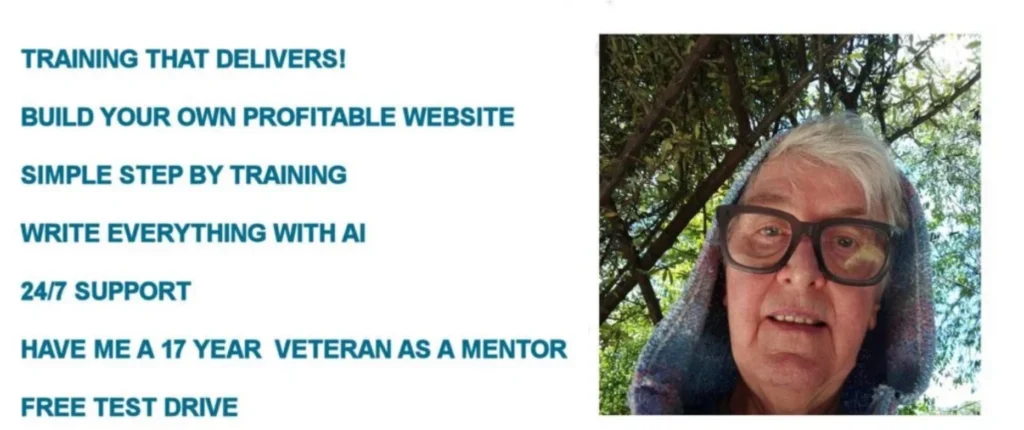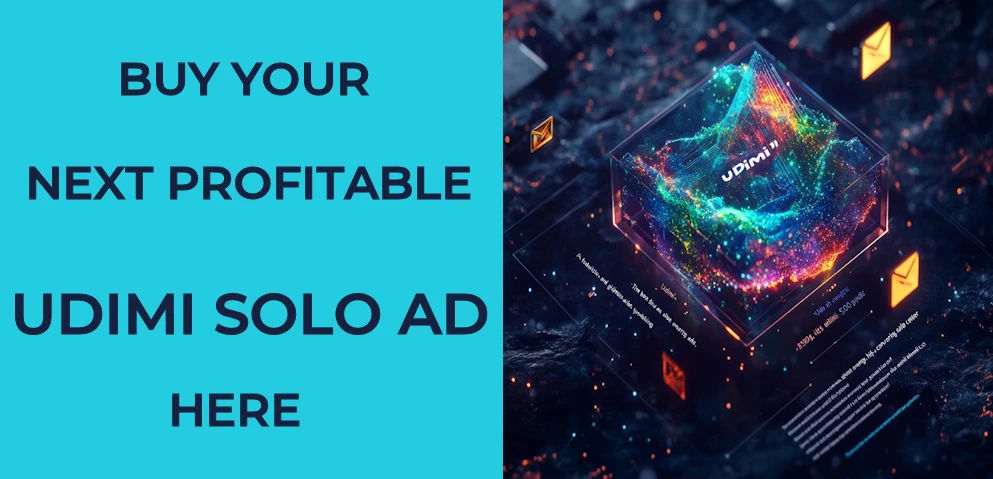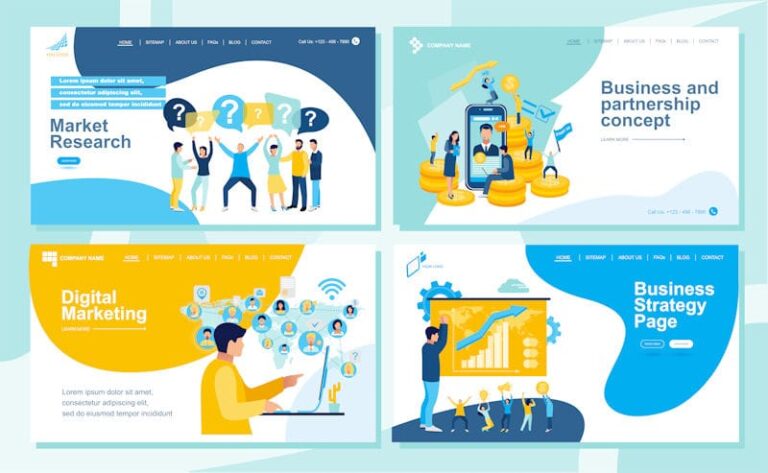Do Solo Ads Still work in 2025
Solo ads have been a go-to strategy for driving traffic and building email lists for years. They’re simple: you pay someone with a large email list to promote your offer. But in 2025, with ever-evolving marketing trends and consumer behavior, many are wondering if this method is still worth it. Can solo ads still deliver results, or are other marketing strategies a better use of your budget? In this post, we’ll break it all down so you can decide if solo ads fit into your growth strategy this year. To back this article up I am doing my first solo ad in fifteen years I will be posting the results next week. It is a new blog and a new landing page. You can see my landing page here
The best Training for 2025

What Are Solo Ads?
If you’re looking for a way to quickly grow your email list or drive traffic to an offer, solo ads might be worth considering. They’ve become a popular tool in the marketing world, especially for those who are just getting started or need results fast. But what exactly are solo ads, and why do they work for certain types of campaigns? Let’s break it down.
The Basic Concept of Solo Ads
Solo ads are a straightforward marketing strategy. Here’s the idea: you pay a marketer or business owner who has a large, targeted email list to send your promotional email to their subscribers. Essentially, you’re “renting” their list for a one-time or short-term campaign.
Think about it this way: instead of building your own audience from scratch, you’re borrowing someone else’s audience for a fee. These email lists are often niche-focused, which means they’re made up of people who already show interest in specific topics or industries.
When you pay for a solo ad, the owner of the list crafts an email around your offer (or uses one you’ve written) and shares it with their subscribers. In theory, since the email is sent to a pre-qualified group of people, the chances of generating high-quality leads are much higher compared to cold outreach on social media or paid ads that target a general audience.
“Permission marketing is the privilege (not the right) of delivering anticipated, personal and relevant messages to people who actually want to get them.”
Seth Godin
Who Uses Solo Ads and Why?
The simplicity and speed of solo ads make them especially appealing for certain groups of marketers. If you’re wondering whether solo ads could work for your business, consider these use cases:
- Affiliate marketers: Solo ads are often used to promote affiliate offers because they require immediate traffic. Affiliates rely on scalable traffic sources to generate commissions fast, and solo ads allow them to connect with ready-to-buy or interested audiences without investing in long-term strategies like SEO or content creation.
- Digital product sellers: Courses, eBooks, software, and other digital items are a perfect fit for solo ad campaigns. Sellers use them to reach niche buyers who might already be interested in their product type. For example, if someone sells a WordPress plugin for marketers, a solo ad sent to a list of “digital marketing” enthusiasts could drive sales quickly.
- Lead generation campaigns: Building an email list from scratch takes time, but solo ads can help speed up the process dramatically. Many solo ad buyers use this strategy to grow their lists by offering a lead magnet, such as a free guide, checklist, or video series. This tactic works especially well for people launching new businesses or scaling an audience for future offers.
In short, solo ads appeal to people who need fast results without spending months growing their audience organically. While they aren’t a magic bullet, they can provide a shortcut when used strategically and targeted at the right group of individuals.
The Evolution of Solo Ads: 2025 Perspective
Solo ads in 2025 are far from what they were just a few years ago. The way we use email marketing, engage with audiences, and craft campaigns has seen a major shift. With advancements in technology and shifting consumer habits, solo ads have had to adapt to stay relevant. Let’s take a closer look at the key developments shaping their use today.
Improvements in Email Marketing Platforms
In 2025, email marketing platforms are smarter, faster, and more intuitive. This directly impacts the effectiveness of solo ads. Enhanced email delivery systems mean messages are hitting inboxes more consistently than ever before. Features like AI-powered spam filters ensure legitimate promotional emails avoid the dreaded spam folder – a big win for solo ad buyers.
Analytics tools have also come a long way. Solo ad campaigns now benefit from advanced performance tracking, allowing buyers to see exactly how their messages are performing. Metrics go beyond clicks and opens; they now include insights like engagement scoring, recipient behavioral trends, and even predictive analytics. This means you’re not just guessing whether a solo ad will convert – you have data to back it up before you even send it.
Additionally, platforms now offer improved audience segmentation capabilities. Solo ad sellers can create hyper-targeted lists, ensuring the ad reaches subscribers who are genuinely interested in the offer. A solo ad promoting fitness supplements, for instance, can now be sent to a list of active readers with recent purchase activity in the fitness niche. This specificity eliminates wasteful spending, making campaigns more efficient and results-driven.
Changes in Consumer Behavior
Consumer behavior in 2025 has shifted dramatically. With inboxes flooded daily, people have become more selective about the emails they engage with. For solo ads, this means one thing: relevance is everything.
Today’s consumers demand more value upfront. They’re not clicking on emails purely out of curiosity; they’re clicking because they believe something in it directly benefits them. Generic promotions no longer cut it. Recipients expect to see offers tailored to their exact needs, whether it’s a limited-time discount, an exclusive eBook, or something that solves a specific pain point they’re facing.
There’s also less patience for hard sells. Instead, consumers prefer relationship-building emails that provide useful insights or free resources first before presenting an offer. Solo ads that take this approach – often by driving traffic to a lead magnet like a guide or checklist – perform better compared to straight-up sales pitches.
Finally, trust has become a top priority. Many consumers are wary of promotional emails, especially from unfamiliar senders. Solo ad buyers need to ensure their offers feel credible and come across as authentic partnerships with the list owner, not just a random sales message landing out of nowhere.
The Shift Toward Personalization
In 2025, personalization isn’t just a “nice-to-have” – it’s a must. Thanks to AI and machine learning, personalization has entered a new era where every email feels like it was written specifically for the reader. This is reshaping how solo ads are created and delivered.
Modern solo ads rely on tailored language and targeted content. Rather than blasting the same email to an entire list, successful campaigns dynamically adjust content based on factors like location, previous interests, or purchase history. For example, if you’re buying a solo ad for a health product, the email could highlight weight loss tips for one segment and muscle-building advice for another. It’s the same product, but the message feels unique.
Personalized subject lines and calls-to-action also help increase open and click-through rates. Something as simple as using the recipient’s first name or referencing a specific interest can make the email feel less like an ad and more like a conversation. For solo ads, this plays a huge role in boosting engagement.
Furthermore, personalization humanizes solo ads, bridging the gap between cold marketing and building genuine connections. Readers receiving these emails are no longer just numbers on a list – they’re individuals with specific problems your offer can solve. And when they feel understood, they’re far more likely to respond positively.
These trends are reshaping how marketers use solo ads today. From smarter tools to new consumer expectations, the solo ad environment in 2025 has become more targeted and results-focused than ever before.
Pros and Cons of Using Solo Ads in 2025
Solo ads have long been a favorite among marketers looking for fast traffic and a quick way to build email lists. But like any marketing strategy, they come with their own advantages and challenges. If you’re considering solo ads in 2025, it’s important to know both sides of the equation before investing your time and money. Let’s take a closer look.
Advantages of Solo Ads
Solo ads offer a range of benefits, particularly for those who need results quickly or want to target specific audiences without spending months building their own lists. Here are some of the key advantages:
- Rapid Traffic Generation: Solo ads are one of the fastest ways to drive traffic to your landing page or offer. Once you’ve chosen a seller and provided your email copy, your campaign can go live within days—or even hours. This immediacy makes solo ads ideal for time-sensitive promotions or when you need an instant boost in subscribers.
- Ease of Use: Let’s face it—building an audience entirely from scratch takes serious time and effort. With solo ads, you can skip a lot of the grunt work. You’re essentially tapping into someone else’s hard-earned audience. All you need is a great offer and a solid email to share. For beginners, it’s an accessible way to dip into email marketing without needing to master complex long-term strategies.
- Targeting Specific Niches: One of the biggest perks of solo ads is the ability to reach niche audiences. If you’re promoting a product, course, or lead magnet that serves a specific group—like fitness enthusiasts, digital marketers, or pet owners—you can find sellers with lists tailored to those interests. This ensures your campaign gets in front of people more likely to care about your offer, improving your odds of success.
- Test New Offers Quickly: Have a new product or idea? Solo ads let you test the waters fast. By running a small campaign, you can gauge interest in your offer before committing to larger advertising budgets. Think of it like dipping your toe in the pool before diving in.
- No Algorithm Dependency: Unlike running ads on major platforms like Facebook or Google, solo ads don’t depend on algorithms that constantly change or throttle your reach. Your campaign is guaranteed to land directly in inboxes, bypassing platforms that might charge more for the same visibility.
For marketers who want quick wins without building a huge following first, solo ads are a convenient option. But they’re not without their downsides.
Disadvantages of Solo Ads
While solo ads can deliver results, they come with some significant challenges too. It’s important to understand these potential pitfalls so you can plan carefully and avoid wasting your budget.
- High Costs: Solo ads can be expensive, especially if you’re sourcing lists from well-established sellers with large audiences. Prices usually depend on the size and quality of the list, with costs often ranging from $50 to hundreds of dollars for just a few clicks. And there’s no guarantee those clicks will turn into conversions. If your budget is tight, this might not be the best strategy for you.
- Potential for Poor-Quality Leads: Not all email lists are created equal. Some sellers may promise high-quality traffic, but their lists could include disengaged subscribers or people who sign up purely to grab freebies. These low-quality leads often don’t convert into paying customers, leaving you with little to show for your investment. Researching and vetting sellers is critical, but even then, there are no guarantees.
- Dependency on Third-Party Lists: With solo ads, you’re relying on someone else’s audience—not your own. This means you have little control over the relationship with the subscribers. If the list owner sends too many spammy or irrelevant emails, it could hurt your campaign’s reputation. Plus, if you stop running solo ads, the traffic stops too. It’s not a sustainable, long-term solution unless you’re actively building your own list in the process.
- Risk of Spam Complaints: Sending promotional emails to someone else’s list always carries a risk. If subscribers aren’t familiar with your brand, they may hit the spam button, even if the email was shared legitimately. This can hurt your credibility and, in extreme cases, lead to penalties for the seller or yourself.
- Lack of Transparency: Some solo ad sellers may not disclose enough details about their lists, such as how they acquired their subscribers or how often they email them. Without transparency, it’s difficult to know if you’re paying for a quality audience or wasting money on an overused and generic list.
- Results Can Vary: What works for one marketer might fail for another. Solo ad success often depends on the seller’s list quality, your email copy, and your offer’s relevance. Even with a great setup, there’s always an element of unpredictability. This makes it harder to scale consistently compared to other strategies like Facebook ads or organic growth.
For all its benefits, solo ads are far from a guaranteed win. If you go into it knowing the risks, you’ll be better equipped to decide if it’s the right move for your business in 2025.
How to Choose the Right Solo Ad Provider
Selecting the right solo ad provider can make or break your campaign. The provider you choose determines the quality of traffic your offer will receive and, ultimately, the success of your goals. But with so many options out there, how can you sift through the noise and find the right fit? The following tips will guide you through the process.
Characteristics of a Reliable Provider
Not all solo ad providers are created equal. Some are highly reputable and consistently deliver, while others fall short and leave you with wasted time and money. To ensure you’re partnering with a trustworthy provider, here are the key traits to look for:
- Strong Reputation: A reliable provider will have a solid track record. Look for reviews, ratings, or testimonials from other marketers who’ve worked with them. High praise from repeat buyers is a good indicator that their list delivers results.
- Transparent Pricing: You want clarity on what you’re paying for. Reputable providers will offer straightforward pricing structures and clearly outline what’s included. Beware of vague or hard-to-justify costs—this could be a red flag.
- Verified Results: The best providers can back up their claims with proof. This might include conversion stats, click-through rates, or examples of successful campaigns. Look for metrics like opt-in rates or sales generated from their lists.
- Niche Expertise: Successful solo ad campaigns often depend on targeted traffic. Providers with email lists centered around specific interests or niches (e.g., fitness, personal finance, or digital marketing) are more likely to connect your offer with the right audience.
- Responsive Communication: A trustworthy seller will be easy to reach and willing to answer your questions. Poor communication early on might signal issues down the road.
Finding someone with these qualities takes a little extra legwork, but it’s worth the effort. The right provider will help maximize your results and ensure your investment pays off.
Questions to Ask Before Buying
Before spending your hard-earned money on a solo ad, you need to make sure the provider is the right fit for your goals. Asking the right questions upfront can save you from costly mistakes later. Here are some key things to ask:
- What is the niche or audience focus of your list?
Make sure the audience aligns with your offer. If you’re promoting a product for entrepreneurs, a list filled with fitness enthusiasts might not give you the results you want. - How was your email list built?
A high-quality list comes from ethical practices, like organic opt-ins and targeted lead generation. Avoid lists built through shady methods, like scraping emails or offering unrelated freebie incentives. - How engaged is your audience?
Engagement matters. Ask about the list’s average open and click-through rates to gauge how actively subscribers interact with emails. Highly engaged audiences are more likely to convert. - How often do you send emails to your subscribers?
Over-emailing can lead to list fatigue, meaning subscribers might ignore or unsubscribe from messages. Find out if the list is overused or well-maintained to preserve its responsiveness. - Can you share testimonials or case studies?
Past performance is a strong indicator of future results. Established solo ad providers should have examples of successful campaigns or customer testimonials they can share with you. - Will I have control over the ad content?
Many providers allow you to write your own email copy or review what’s being sent. This is crucial for ensuring your messaging is on-brand and communicates your offer effectively. - What guarantees or refund policies do you offer?
Some reputable providers may offer guarantees for certain outcomes, like a set number of clicks. Clarify upfront what happens if your ad underperforms or doesn’t deliver as promised.
By asking these questions, you can better understand what you’re getting into and avoid falling for providers who aren’t the right match. The goal is to protect your budget while ensuring your offer connects with the right audience. Take the time to vet carefully—it pays off.
The Role of Udimi.com in Solo Ad Campaigns
For anyone considering solo ads in 2025, Udimi.com stands out as one of the oldest, most reliable and user-friendly platforms to source quality traffic. Built specifically for solo ads, it connects buyers with vetted sellers, making it easier to find high-quality email lists in your niche. Unlike other marketplaces that lack transparency, Udimi provides tools that ensure better results and protect your investment. Let’s break down what makes Udimi a top choice for solo ad buyers.

Unique Features of Udimi.com
One of the key reasons Udimi has become a go-to platform for solo ads is the suite of tools it offers to buyers. These tools are designed to eliminate risks, filter out low-quality traffic, and ensure a smooth experience. Here’s what sets Udimi apart from other platforms:
- Traffic Filters: Not all clicks are created equal, and Udimi knows that. Their advanced filtering system blocks fake traffic, bots, and junk clicks, ensuring you receive genuine human traffic. This feature alone saves buyers from wasting money on low-quality leads.
- Seller Ratings and Reviews: Transparency is everything when buying solo ads. Udimi provides a detailed rating system that lets you see feedback from previous buyers. You can view seller success rates, communication reviews, and even results from past campaigns. This helps you make informed decisions before spending a dime.
- Niche-Specific Sellers: Searching for a seller in a specific niche is seamless on Udimi. Whether you’re targeting fitness enthusiasts, digital marketers, or cryptocurrency investors, Udimi’s marketplace makes it easy to filter sellers who cater to your audience.
- Built-In Communication Tools: Udimi allows buyers and sellers to connect directly through the platform. This makes it simple to ask questions about audience demographics or clarify expectations before purchasing.
- Refund Policies: One of Udimi’s standout features is its buyer protection system. If a seller fails to deliver the agreed number of clicks or sends low-quality traffic, buyers can request a refund through Udimi’s dispute resolution process. This feature removes much of the uncertainty associated with solo ad campaigns. They do take their reputation seriously and in my experience this is automatic because they can see from their analytics you have been sent crap traffic. Also if the seller does not respond to your initial request in 24 hours you get your money refunded instantly without asking. Equally if the seller short changes you on agreed clicks you dont have to ask for your money back you just get it.
- Real-Time Tracking: Udimi offers integrated tracking tools that monitor your campaign’s performance in real time. You can see exactly how many clicks you’ve received, where they’re coming from, and other key metrics, ensuring full transparency throughout your campaign.
- Repeat Orders: This is my personal favorite feature. You can see what percentage of people have used the sellers more than once. More importantly repeats show up once. So when a buyer has asked five times for the same seller it only shows up twice which make the results more accurate and transparent in my view.
These features make Udimi a safe and effective choice for marketers who want to try solo ads. Beginners, in particular, benefit from Udimi’s protective measures as they navigate the learning curve of paid traffic.
Success Stories From Udimi.com Users
The effectiveness of Udimi isn’t just theoretical—real marketers have shared their success stories, proving how powerful the platform can be. Here are a few examples of campaigns that delivered impressive results. All of these people are in one of my mastermind groups, I am in two at the moment. All these stories are within January and early February 2025.
John’s Affiliate Marketing Campaign:
John, an affiliate marketer promoting digital tools, decided to try Udimi after struggling with Facebook ads. He purchased a solo ad from a top-rated seller in the “online business” niche for $150, targeting 300 clicks. The campaign brought in 180 subscribers to his email list, and within a month, he had generated over $500 in affiliate commissions. For John, Udimi not only helped build his list fast but also turned a profit quickly.
- Lisa’s Lead Generation Success:
Lisa, a fitness coach selling online meal plans, used Udimi to grow her email list with potential clients. She ran a campaign offering a free downloadable meal prep guide as a lead magnet. By purchasing a solo ad targeting health-conscious women, she gained 250 new email subscribers and booked 14 consultations. For a budget of $200, the return on her investment was significant, with some consultations converting into long-term coaching packages. - Mark’s Digital Product Launch:
Mark launched a paid course on productivity hacks and needed immediate traffic to test his offer. After purchasing a 500-click solo ad on Udimi, he not only gained 320 email opt-ins but also secured 12 course sales during the campaign. The revenue he made from the sales covered his ad cost, and the additional leads gave him opportunities for future upsells. - Emma’s SaaS Trial Campaign:
Emma, the founder of a SaaS platform for small business owners, wanted to drive sign-ups for her free trial offer. She targeted solo ad sellers with email lists focused on entrepreneurs. Emma’s $300 campaign resulted in 400 clicks, yielding 120 trial sign-ups. Of those, 20 converted into paying customers over the next few weeks, generating over $1,000 in monthly recurring revenue for her business.
These stories demonstrate how Udimi can help marketers achieve measurable results, whether the goal is building a subscriber base, selling a product, or generating leads. Success often depends on the quality of the seller, the relevance of the offer, and the effectiveness of the email copy, but Udimi gives buyers the tools to stack the odds in their favor.
By providing a secure, transparent, and results-oriented platform, Udimi continues to be an invaluable resource for marketers leveraging solo ads in 2025.
How to Measure the Success of a Solo Ad Campaign
Running a solo ad campaign is an investment, and just like any investment, you want to ensure it’s paying off. Knowing how to evaluate the impact of your efforts is key to improving your strategy and getting better results over time. Below, we’ll break down what to track and how to adjust your approach for maximum success.
Essential Metrics to Track
Tracking the right metrics is the backbone of any successful solo ad campaign. These numbers tell you what’s working and what isn’t. Here are the most important key performance indicators (KPIs) to focus on:
- Click-Through Rate (CTR): This shows the percentage of people who clicked the link in your email out of the total number of people who received it. A high CTR means your email copy and offer are compelling. To calculate it, divide the number of clicks by the number of email deliveries, then multiply by 100.
- Conversion Rate: Getting clicks is great, but what really matters is whether those clicks turn into actions. Whether it’s opting into your email list, downloading a freebie, or making a purchase, your conversion rate is one of the best indicators of success. Calculate it by dividing the number of conversions by the total clicks, then multiplying by 100.
- Return on Investment (ROI): At the end of the day, all that traffic and engagement should generate revenue or long-term value. To measure ROI, subtract your campaign costs from the revenue generated, then divide by your campaign costs. Multiply the result by 100 to express it as a percentage.
- Cost Per Click (CPC): This is how much you’re paying, on average, for each click. Divide the total cost of your solo ad by the number of clicks it delivered. Compare this to your other marketing efforts to decide if solo ads are a cost-effective strategy for you.
- Lead Quality: Numbers are important, but so is lead quality. Ask yourself, “Are these people engaging with follow-up emails? Are they unsubscribing quickly? Are they actually converting into customers?” A smaller list of engaged leads is better than a large list that doesn’t take action.
- List Growth: If your campaign is focused on growing your email list, track how many new subscribers you gained. This metric helps you assess whether the campaign is helping you build your audience effectively.
Keep a close eye on these metrics as your campaign runs. Tools like landing page trackers, email marketing software, and even Google Analytics can simplify the process.
Adjusting Strategies for Better Results
Solo ad campaigns aren’t a one-and-done deal. It’s rare to hit a home run on your first attempt, but the beauty of marketing is its adaptability. By reviewing your results and making adjustments, you can improve your campaigns over time. Here’s how:
- Test Different Sellers: Not every solo ad provider will deliver the same quality of traffic. If your first attempt doesn’t pan out, consider testing a new seller with better reviews, a more targeted niche, or higher audience engagement.
- Optimize Your Landing Page: A poorly optimized landing page can tank your conversion rate, even if your ad generates a lot of clicks. Test different headlines, call-to-action buttons, layouts, or visuals to see what converts better. Tools like A/B testing are perfect for this.
- Refine Your Offer: If your CTR is strong but conversions are low, it could mean your offer isn’t connecting with your audience. Revamp your lead magnet, adjust your pricing, or add urgency to your call-to-action. Small tweaks can make a big difference.
- Upgrade Your Email Copy: Your email copy sets the stage for engagement. If people aren’t clicking, consider reviewing your subject line, preview text, or body content. Be clear about the value you’re offering and make your call-to-action stand out.
- Focus on Audience Fit: Ensure the solo ad provider’s list matches your target audience. If you’re selling a productivity tool and the list is full of fitness enthusiasts, you’re unlikely to see high-quality results. Always double-check the audience specifics before committing.
- Set Clear Campaign Goals: What does success look like to you? If you’re aiming to grow your email list, focus on optimizing for opt-ins. If you’re promoting a specific product, prioritize sales and revenue metrics. Having a clear goal will help you refine your approach.
- Analyze Lead Engagement: Post-campaign, track how new leads interact with your follow-up emails. Are they opening, clicking, or engaging with your brand? If not, consider whether your follow-up sequence needs improvement to build trust and drive conversions.
- Scale What’s Working: Once you find a winning formula—a great seller, a high-converting landing page, or a compelling offer—focus on scaling it. Increase your budget, expand your reach, or run similar campaigns with the same approach.
Adjusting your strategy isn’t failure—it’s part of the process. Think of it like steering a ship: small course corrections are often needed to reach the destination. The more you measure and fine-tune, the more effective your solo ad campaigns will be.
Alternatives to Solo Ads in 2025
While solo ads can be a quick way to drive traffic and build your email list, they’re not the only option. Marketing in 2025 offers a range of strategies that can generate leads, nurture customer relationships, and grow your audience in a sustainable way. Below are some popular paths to consider instead of—or alongside—solo ads.
Social Media Advertising for Lead Generation
Social media platforms are among the most powerful tools for businesses looking to grow their audience. Platforms like Facebook, Instagram, and LinkedIn provide advanced targeting options that solo ads simply can’t match. Here’s how they stack up as alternatives:
- Facebook Ads: With billions of users, Facebook allows you to target specific demographics, interests, behaviors, and even life events. Whether you’re promoting a lead magnet or driving traffic to a webinar, you can tailor every ad to meet your audience’s needs. Plus, Facebook’s ad algorithms continually optimize your campaigns to improve performance over time.
- Instagram Ads: Perfect for brands with strong visual content, Instagram ads allow you to showcase your product or service in creative ways through Stories, Reels, and carousel posts. You can capture attention with eye-catching graphics or videos and drive leads with clickable links, even within Stories.
- LinkedIn Ads: If your audience is more business-focused, LinkedIn is an excellent choice. LinkedIn’s targeting features are ideal for B2B companies, allowing you to connect with decision-makers based on their job titles, industries, or company sizes.
The biggest advantage of social media ads? They offer instant feedback. With detailed reporting and analytics, you’ll know exactly how your campaigns are performing. And if something isn’t working, adjustments can be made on the fly.
Content Marketing and SEO
Content marketing is one of the most sustainable strategies for building an audience. Unlike paid ads, high-quality content can continue to bring in visitors months or even years after it’s published. Combine this with smart SEO strategies, and you’ve got a powerhouse for organic traffic.
- Creating Valuable Content: Writing blog posts, guides, or creating videos that answer your audience’s questions positions you as an authority in your industry. For example, if you sell fitness products, a blog post titled “10 Easy Meal Prep Tips for Beginners” can attract readers who are likely to be interested in your offerings.
- Optimizing for Search: SEO ensures your content ranks on search engines like Google. By researching and using the right keywords, optimizing page load speeds, and building backlinks, you’ll bring in consistent organic traffic. SEO takes time, but the payoff is worth it.
- Using Lead Magnets: Pair your content with a strategic lead magnet. For instance, offer a free checklist, eBook, or template in exchange for email sign-ups. This allows you to grow your list while providing readers with immediate value.
Content marketing doesn’t just attract leads; it nurtures them. When people find value in your content, they’re more likely to trust your brand and take the next step, whether that’s subscribing to your newsletter or making a purchase.
Pay-Per-Click (PPC) Advertising
For those looking to maintain control over their traffic, PPC advertising is a strong alternative to solo ads. Google Ads and Bing Ads allow you to bid on keywords to appear at the top of search results. Here’s why PPC might make sense for your business:
- Highly Targeted: Unlike solo ads, PPC lets you bid on specific search terms relevant to your audience. For instance, if you run a financial planning service, you can target phrases like “best budgeting app” or “how to save for retirement,” delivering your ad to people actively looking for solutions.
- Scalable Budgets: With PPC, you have complete control over your spending. Start small, analyze the data, and scale up only when you’re confident in the campaign’s performance. It’s a measurable way to grow without blowing through your marketing budget.
- Immediate Results: SEO may take time, but PPC generates instant traffic. This makes it an excellent choice for launching new products or testing offers. When you combine PPC with optimized landing pages, the results can be impressive.
- Advanced Analytics: Tools like Google’s performance reports give you detailed insights into your campaign. You’ll see exactly which keywords are driving clicks, how much you’re spending per lead, and where traffic is converting. This level of transparency allows you to refine campaigns in real time.
PPC campaigns require careful monitoring and expertise, but when executed correctly, they provide some of the highest returns on investment, especially for businesses targeting specific audiences or running time-sensitive campaigns.
Solo ads may have their place in today’s marketing world, but exploring these alternatives can lead to more sustainable growth. By utilizing social media ads, content marketing, or PPC strategies, you’ll create multiple pathways to attract and engage leads—tailored to your unique goals.
Conclusion to Do Solo Ads Still work in 2025
Solo ads in 2025 still deliver results, but their success depends heavily on the strategy behind them. They can be an excellent tool for quickly building your email list, especially for beginners or marketers with niche offers. However, they aren’t a one-size-fits-all solution. Factors like audience targeting, the quality of the seller’s list, and how compelling your offer is will all impact your outcomes.If you’re considering solo ads, test small campaigns first and track key metrics like clicks, conversions, and lead quality. Pair them with ongoing efforts—like creating valuable content or running paid social ads—to build a well-rounded marketing plan.Do they work? Yes—if done the right way. But the real question is whether they’re the right fit for your goals and budget. Take your time evaluating your options, and you’ll make smarter decisions for your business.
Frequently Asked Questions About
✅ No! Solo ads should be part of a bigger strategy. Combine them with:
- Content marketing (SEO, blogging)
- Paid ads (Facebook, Google)
- Organic social media marketing







This is a fantastic breakdown of how solo ads have adapted to the changing landscape in 2025! The improvements in email marketing platforms and AI-driven personalization make a compelling case for their continued relevance. I especially appreciate the focus on trust and relationship-building, which seems more important than ever.
I appreciate that you ended by saying solo marketing should be included with large campaigns. How do I know if my business is ready for this type of ad campaign? I am an affiliate marketer building my site with content for my niche. How would I use solo ads to drive business to my affiliate, which revolves around an assortment of items in my niche?
O know you have been using Udimi for years. Have you seen any major shifts in the types of offers that perform best with solo ads?
Great questions, Scott! If you’re an affiliate marketer building out your site, solo ads can be a solid way to drive targeted traffic—*if* you’re strategic about it. The key is making sure your landing page (or funnel) is optimized to convert. If you’re sending traffic straight to an affiliate link, you might see lower conversions, but if you collect emails first—offering something valuable like a lead magnet—you can build a list and market to them over time.
As for knowing when your business is ready, ask yourself:
– Do you have a well-defined niche audience?
– Do you have a high-converting landing page?
– Are you tracking conversions so you know what’s working?
If you can answer *yes* to those, you’re in a good spot to test solo ads.
Regarding Udimi, yeah, I’ve used it for years, and the biggest shift I’ve seen is that generic “make money online” offers aren’t performing like they used to—people are more skeptical. Instead, niche-specific offers with strong lead magnets tend to do better. Think value-first, and you’ll get better results.
What niche are you in? I can suggest some ad angles that might work well for your audience.
Hi there!
This was a fantastic read—I truly appreciate the insights. Marketing has always been a passion of mine, and I find myself constantly thinking about the evolving landscape, especially in the digital space. With the rapid advancement of strategies such as influencer promotions and AI-driven advertising, the way businesses reach their audiences is changing dramatically.
Given these shifts, I’d love to hear your thoughts on how solo ads compare to these modern approaches in terms of cost-effectiveness, targeting precision, and overall return on investment. While influencer marketing leverages social proof and AI-driven ads enhance hyper-personalization, solo ads have long been a go-to for direct, high-intent traffic. Are there specific scenarios where solo ads might still offer a competitive edge, perhaps in niche markets or for list-building strategies?
Looking forward to your perspective on this! Again, fantastic article—I really enjoyed it, and I hope to read more from you in the future. Keep up the great work!
Thanks for that great question Matteo, my answer is not going to be short but I hope it answers your question Solo ads remain a powerhouse in the digital marketing world, but their effectiveness depends heavily on how and where they’re used. While newer strategies like influencer marketing and AI-driven ads have gained traction due to their social proof and machine-learning optimization, solo ads still hold their ground in specific scenarios.
### **Cost and ROI Comparison**
Solo ads can be more cost-effective than influencer promotions or AI-driven ads, particularly for **list-building and affiliate marketing**. With influencer marketing, you’re often paying for brand awareness rather than immediate conversions, and AI-driven ads require ongoing optimization, split testing, and budget allocation to dial in a profitable campaign. Solo ads, on the other hand, provide **direct-response traffic**—you pay once and receive clicks that are already pre-qualified through an engaged email list.
If the goal is **instant opt-ins, sales, or growing a targeted list**, solo ads offer a clear advantage. AI-driven ads require more testing and budget flexibility, while influencers may deliver inconsistent results, depending on engagement rates and audience authenticity.
### **When Solo Ads Are the Better Choice**
1. **Email List Building** – Solo ads remain one of the fastest ways to build an email list with buyers in niche markets like **make money online (MMO), health, and self-improvement**.
2. **Affiliate Marketing** – Unlike influencer promotions that focus on brand-building, solo ads work exceptionally well for **high-converting, commission-based offers** where the goal is immediate action.
3. **Targeting Niches That Are Hard to Advertise** – Some niches, like certain health and finance offers, face **strict ad policies** on platforms like Facebook and Google. Solo ads bypass these restrictions by leveraging **email marketing audiences** rather than paid ad networks.
4. **Budget Control** – Unlike AI-driven campaigns that can quickly escalate in cost due to bidding wars, solo ads let you pay for **exact traffic volume** upfront, making budgeting more predictable.
### **Where Solo Ads Fall Short**
– **Limited Brand Awareness** – Unlike influencer marketing or social ads, solo ads don’t build a long-term brand presence; they’re primarily about lead generation.
– **List Quality Varies** – Success depends on the email list’s engagement and the vendor’s credibility. Poorly curated lists lead to wasted ad spend.
– **No Retargeting** – AI-driven platforms allow for continuous engagement and lookalike audience targeting, which solo ads don’t inherently offer.
### **The Best Strategy? A Hybrid Approach**
While solo ads shine for direct-response marketing, the **most successful marketers** integrate them into a broader **multi-channel strategy**. This means using solo ads for fast lead generation while leveraging AI-driven remarketing and influencer-based trust-building to maximize conversions over time.
In short, solo ads **aren’t dead**—they’re simply **one weapon in an advanced marketer’s arsenal**. When used strategically, they provide one of the **fastest, most predictable** ways to drive high-intent traffic in 2024 and beyond.
Would love to hear your thoughts on how you’ve seen solo ads perform compared to newer approaches!